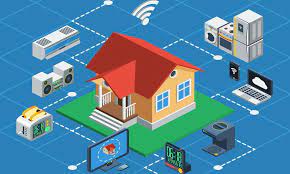26 of the 48 state Medicaid agencies studied could not report the number of “critical incidents” — such as abuse, neglect or exploitation.
You are here
The Future of Sensors and Older Adults -- Looking Forward 5 years
 What changes in care technology will be different later in this decade? Consider the implications of adoption of sensors to deliver and improve the care of older adults -- then look forward five years. What will be different in this second technology wave, both from today and from the market a decade ago? Is this optimism justified? Does the shortage of labor to serve the aging population make sensor technology essential in delivering care? Many of the interviewees for this new report, due out in November, 2022, think that innovation in offerings, caregiving labor shortages, and a swelling demographic aged 80+ all combine to boost both utility and adoption across all care sectors. What specifically might be different?
What changes in care technology will be different later in this decade? Consider the implications of adoption of sensors to deliver and improve the care of older adults -- then look forward five years. What will be different in this second technology wave, both from today and from the market a decade ago? Is this optimism justified? Does the shortage of labor to serve the aging population make sensor technology essential in delivering care? Many of the interviewees for this new report, due out in November, 2022, think that innovation in offerings, caregiving labor shortages, and a swelling demographic aged 80+ all combine to boost both utility and adoption across all care sectors. What specifically might be different?
Standards adoption will simplify deployment of sensors. Within the next five years, tech vendors will likely comply with at least some aspects of the Matter standard. The promoters of the standard, intended to make the vision of the smart home, with easily connected devices, a reality. Will that make it easier to use sensors, and therefore make it more appealing? Only when pioneering organizations lead the way and make it so – as some of these companies surely could with their own customer base.
Asynchronous caregiving. Supplementing scarce work staff with sensors will become part of care optimization. For sure, sensors will not do the jobs that only hands-on care can deliver. But for night shift monitoring of residents, it seems unimaginable that senior living organizations would continue to cobble together temp workers to fill shifts of hall-walking staffers. Or that home care organizations could continue to turn down contracts due to lack of workers to fill them. Or that family members would continue to stay home to fill gaps in care. Instead, in the future, hands-on care will be optimized and supplemented with tech-enabled monitoring. One option, mirroring the supply chain of nearly everything else, is the collaboration among care providers to share the just-right number of workers for the just-right assignments. Perhaps based on time-of-day, perhaps location, perhaps skill requirement.
Cost of care will be rightsized. Because of the combination of sensing technology with in-person, the cost of care will be more closely aligned with what families and organizations should or can afford. And as junior staffers are brought on board, they will be shown the career path available to them, whether in management or a new role, management of care technology.
Predictive analytics will be targeted and actionable. Without accurate and useful analytics, sensor technologies are just gadgets. And their history has been primarily as alerting devices – with too many false notifications and too easily ignored. Or incident detection is too late to prevent injury. The key to utility in healthcare and senior care settings will be the automated production of analytics that aid in decision-making – who fell and why? And moving forward, who is likely to fall, in senior living, but also in home health and private duty home care settings.
Data privacy protections will part of solution planning. One of the five key vulnerabilities in healthcare data security is The Internet of Things. In fact, 63% of healthcare companies reported a security incident related to ‘unmanaged IoT devices.’ The lame recommendation was that these devices must have better security standards to protect information.
Sensor technology will enable moving care from institutions to home. Older adults who live alone do not want to be transferred to a nursing home after hospital discharge. But their safety at home, especially at night, can be questionable. Discharge processes in the future will need to incorporate an easy-to-setup sensor package, with monitoring by professionals and family. Private duty and home health agencies are well-positioned to recommend these packages, and their own labor constraints may push them into doing so.
[From the report, The Future of Sensors and Older Adults 2022, to be published Nov, 2022]
